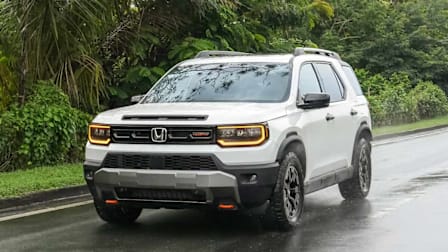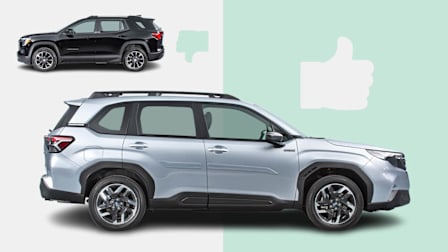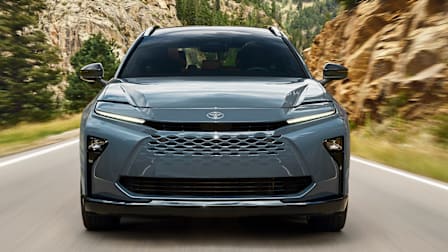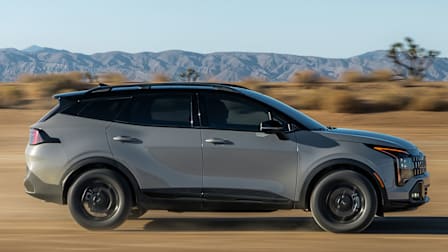First Drive: 2025 Toyota Camry Proves a Bit Better in Many Ways
The redesigned sedan returns only as a hybrid, with AWD available in every trim

Update: Since this first drive was originally published in April, 2024, we finished testing the Toyota Camry. Read the complete Toyota Camry road test.
When Toyota redesigned the Camry sedan for 2025, the automaker took on a challenge that has vexed companies from Coca-Cola to Facebook: How do you update a broadly beloved product? If you don’t keep up with the times, you’ll get eclipsed by more innovative competitors. But if you change too much, you’ll alienate existing customers.
It appears Toyota walked that tightrope very carefully—a prudent strategy, considering that the Camry has been the best-selling sedan in the U.S. for over two decades.
Current Camry owners will likely appreciate that Toyota didn’t revolutionize the 2025 model. Instead, it made a bunch of little improvements, such as new standard active safety equipment, an attractive interior, an available panoramic sunroof, and sharper handling. All-wheel drive is now available on all trims, too.
But representatives from Toyota told us that consumers likely won’t notice the biggest change of all: that every new Camry will have a hybrid powertrain, save for the V8 models racing in NASCAR. We think most new hybrids are often better than their non-hybrid counterparts. In general, hybrids benefit from instant acceleration away from a stop, quiet operation around town, and significant fuel savings.
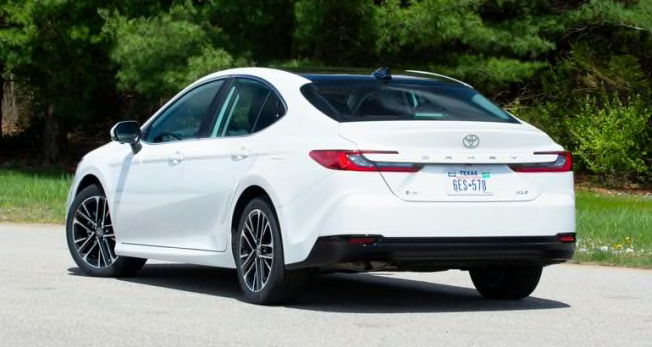
Photo: John Powers/Consumer Reports Photo: John Powers/Consumer Reports
What we rented: 2025 Toyota Camry SE FWD and 2025 Toyota Camry XLE FWD
Powertrain: 225-hp/232-hp, 2.5-liter 4-cylinder hybrid engine; electronic continuously variable transmission; front-wheel drive
MSRP: $30,700 for the SE, $33,400 for the XLE
Options: On the SE, the Multimedia Upgrade Package with a larger screen ($795), the Convenience Package with auto-dimming mirror and smart key ($600), the Cold Weather Package with heated seats and steering wheel ($600), and a moonroof ($870). On the XLE, the Premium Plus Package with Traffic Jam Assist, a panoramic sunroof, reverse automatic emergency braking, and rain-sensing wipers ($4,760), and premium paint ($425)
Destination fee: $1,095
Total cost: $34,925 for the SE and $39,680 for the XLE (estimated)

















